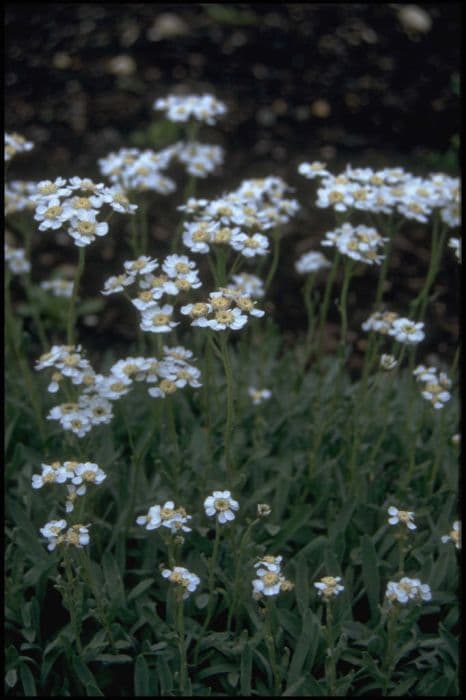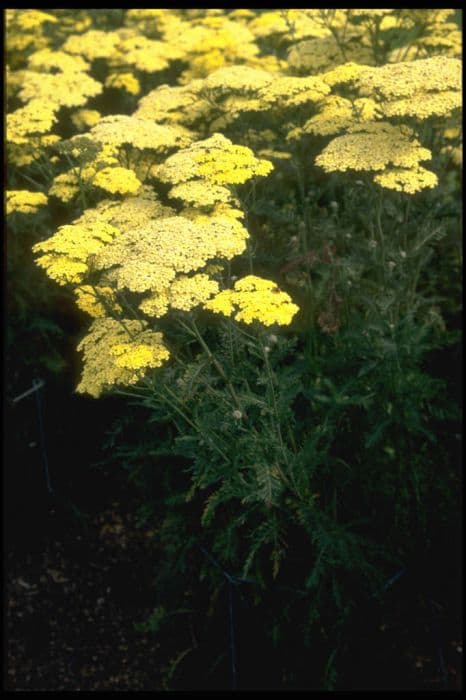Korean Mountain Fern Synurus excelsus

ABOUT
Synurus excelsus is a plant that is characterized by its distinctive foliage and overall structure. The plant typically features leaves that are deeply lobed, with edges that may appear serrated or toothed, giving them a textured look. The leaves are often rich in color, ranging from deep greens to bronze hues, and can have a glossy or matte finish. The arrangement of the leaves on the stems can give the plant a robust and lush appearance. In terms of its flowers, this plant bears them in clusters that could be tightly packed or loosely arranged, depending on the variety. The flowers can come in different shades, including yellows, whites, or purples, enhancing the visual appeal of the plant. These blooms might be small and inconspicuous or more prominent, contributing to the ornamental value. The stems of Synurus excelsus are sturdy and can lend a strong framework to the plant. They help to elevate the leaves and flowers, ensuring they are well-displayed. The texture of the stems might be smooth or have a certain roughness, sometimes showing a coloration that matches or contrasts with the foliage. Overall, the appearance of Synurus excelsus is one of vitality and growth, with its various parts coming together to form an attractive whole. By combining the textures of its leaves, the colors of its blossoms, and the strength of its stems, this plant creates a visually appealing presence in any setting where it is found.
About this plant
 Names
NamesFamily
Asteraceae
Synonyms
Korean Thistle
Common names
Synurus excelsus.
 Toxicity
ToxicityTo humans
I couldn't find any specific toxicity information for a plant named Synurus excelsus. Without the correct information, I cannot provide a description of its toxicity to humans. It is crucial to exercise caution with unknown plants and consult a medical professional or a toxicologist for accurate information regarding plant safety.
To pets
As with the information for humans, I also couldn't find specific toxicity information for a plant named Synurus excelsus regarding its effects on pets. As a result, I cannot provide a detailed description of the symptoms of poisoning or the consequences of ingestion. It is always best to err on the side of caution and keep pets away from plants that have not been confirmed as safe, and consult a veterinarian if you suspect your pet has ingested a potentially toxic plant.
 Characteristics
CharacteristicsLife cycle
Perennials
Foliage type
Deciduous
Color of leaves
Varies
Height
6 feet (1.83 meters)
Spread
3 feet (0.91 meters)
Plant type
Herb
Benefits
 General Benefits
General Benefits- Ecosystem support: Synurus excelsus provides habitat and food for a variety of insects and wildlife.
- Soil stabilization: Its root systems can help prevent soil erosion in the areas where it grows.
- Ornamental value: The plant may have aesthetic appeal in natural landscaping and garden settings.
- Biodiversity enhancement: It contributes to the biodiversity of the ecosystem by its presence.
- Food source: Certain parts of the plant might be edible for humans or used as fodder for livestock.
- Pollinator attraction: Flowers of Synurus excelsus may attract bees and other pollinators, supporting pollination processes in the environment.
 Medical Properties
Medical Properties- Anti-inflammatory: Synurus excelsus may have properties that help reduce inflammation in the body.
- Antioxidant: The plant could contain compounds that act as antioxidants, helping to protect cells from damage caused by free radicals.
- Analgesic: There may be components in Synurus excelsus that provide pain relief.
- Antibacterial: It might have the ability to inhibit the growth of certain bacteria, thus providing potential antibacterial benefits.
 Air-purifying Qualities
Air-purifying QualitiesThis plant is not specifically known for air purifying qualities.
 Other Uses
Other Uses- In landscaping, Synurus excelsus can be used for its ornamental value due to its distinctive foliage that can add an aesthetic appeal to gardens and parks.
- The plant's tough leaves can be used in traditional handcrafts for making items such as small woven baskets or mats.
- Dried aspects of Synurus excelsus, such as its flowers or stems, can be incorporated into decorative dried flower arrangements or potpourris.
- The plant may serve as a natural barrier or hedging plant due to its potential to grow in thick clumps.
- Its tall and robust structure allows Synurus excelsus to be used as a privacy screen in gardens or between properties.
- In ecological conservation, the plant can be used to stabilize soil and prevent erosion on slopes or in areas prone to landslides.
- As a companion plant, it might benefit nearby crops by attracting beneficial insects or providing shade to sun-sensitive plants.
- The fibers from its stems could be explored for use in making sustainable, biodegradable materials.
- Synurus excelsus can be part of a biodiverse meadow or prairie restoration project to help support local wildlife.
- When planted near water bodies, it can play a role in water filtration and maintaining the cleanliness of the aquatic ecosystem.
Interesting Facts
 Feng Shui
Feng ShuiThe Korean Synurus is not used in Feng Shui practice.
 Zodiac Sign Compitability
Zodiac Sign CompitabilityThe Korean Synurus is not used in astrology practice.
 Plant Symbolism
Plant SymbolismUnfortunately, I was unable to find information on the specific symbolic meanings of Synurus excelsus or its common name. Plant symbolism often varies by region and culture, and not all plants have widely recognized symbolic meanings. If Synurus excelsus has local or cultural significance, such information might not be available in widely accessible sources or international databases.
 Water
WaterThe Udo plant, commonly known as Synurus excelsus, should be watered thoroughly yet infrequently, allowing the soil to dry out slightly between waterings. In general, watering once a week is sufficient, but this may vary depending on the humidity and temperature of the growing environment. When watering, use enough water so that it runs out of the drainage holes, which might be approximately a gallon for a large plant. During the active growing season in spring and summer, the Udo plant may need more frequent watering, while in fall and winter, less water may be required.
 Light
LightUdo plants prefer bright, indirect light but can tolerate some shade. They should not be placed in direct sunlight, which can scorch their leaves. A spot near a window with a sheer curtain or somewhere that receives dappled sunlight is ideal for this plant.
 Temperature
TemperatureUdo plants thrive in a temperate climate with temperatures ranging between 50 and 70 degrees Fahrenheit. They should be protected from temperatures below 40 degrees Fahrenheit, which can damage the plant. The ideal temperature range for optimal Udo plant growth is between 60 and 70 degrees Fahrenheit.
 Pruning
PruningPruning the Udo plant encourages healthy growth and prevents it from becoming leggy. Trim back the stems and remove any dead or yellowing leaves as needed, usually once during the spring or early summer. Regular pruning also helps maintain an attractive shape and can stimulate the growth of new foliage on the plant.
 Cleaning
CleaningAs needed
 Soil
SoilThe Japanese silverleaf sunflower thrives best in a soil mix that is rich in organic matter, well-draining, and has a slightly acidic to neutral pH ranging from 5.5 to 7.0. A mixture of loam, peat, and perlite or sand can create an ideal growing medium, ensuring the roots have adequate aeration and moisture without becoming waterlogged.
 Repotting
RepottingJapanese silverleaf sunflowers should be repotted every two to three years to refresh the soil and accommodate growth. It is best to repot in spring or early summer when the plant is entering a period of active growth.
 Humidity & Misting
Humidity & MistingJapanese silverleaf sunflowers prefer a moderate humidity level, ideally between 40-60%. If the air is too dry, especially indoors, using a humidifier or pebble tray can help increase humidity around the plant.
 Suitable locations
Suitable locationsIndoor
Keep in bright, indirect light with moderate humidity.
Outdoor
Place in partial shade, protect from strong winds.
Hardiness zone
5-9 USDA
 Life cycle
Life cycleThe plant Synurus excelsus, commonly known as Korean mountain fern, originates as a spore that germinates in a suitable environment to form a small, heart-shaped gametophyte. The gametophyte, through sexual reproduction, develops sex organs that produce eggs and sperm. Upon fertilization, a zygote is formed, which then grows into the sporophyte - the dominant and recognizable phase of the fern with fronds. The sporophyte matures and develops sori on the underside of its fronds, which contain spore-producing structures called sporangia. When mature, the sporangia release spores, completing the life cycle of the plant as these spores disperse to grow into new gametophytes. This cycle of spore to gametophyte to sporophyte repeats, allowing the Korean mountain fern to perpetuate and spread within its environment.
 Propogation
PropogationPropogation time
Spring to Summer
Synurus excelsus, commonly known as the Korean mountain fern, is often propagated by spores, which are the most popular method for this fern species. The optimal time to collect spores for propagation is during the late summer months when they naturally mature. To propagate Korean mountain fern by spores, one starts by collecting the spore-laden fronds and gently tapping them over a piece of paper to release the spores. The spores are then sown on the surface of a sterile, moist potting mix, ideally kept at a temperature around 68 degrees Fahrenheit (20 degrees Celsius). The container should be covered with a lid or plastic wrap to maintain high humidity and placed in indirect light. It's essential to keep the soil evenly moist without being waterlogged, as fern spores are highly susceptible to drying out. In several weeks to months, the spores will germinate and develop into a green film of tiny prothallus, which will eventually give rise to new fern plants.









